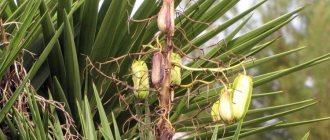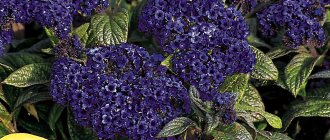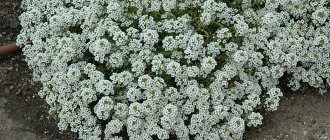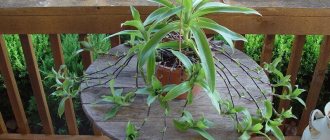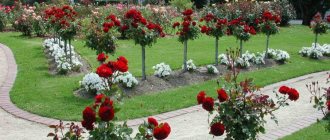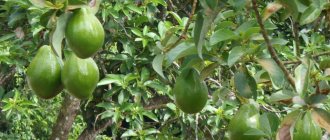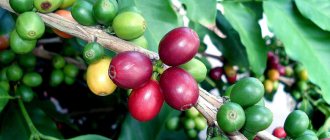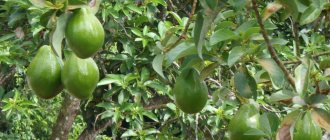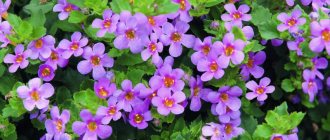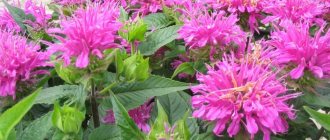- November 11, 2018
- Houseplants
- Ekaterina Ryzhkova
What is a living tree indoor plant? Is it useful? You will find answers to these and other questions in the article. Crassula, known as the living or money tree, belongs to the Crassula family. This genus includes about 350 species, many of which are native to tropical and southern Africa, as well as Madagascar.
At the same time, the medicinal qualities of this plant are known almost all over the world. In the article you will see a photo of an indoor living tree, and also get acquainted with its properties and growing characteristics.
Short description
In the photo, the live indoor tree looks great. What kind of plant is this? Crassula, or Crassula, is a genus of perennial and annual succulents of the Crassula family, widely known mainly in the southern hemisphere.
Countless species of Crassula live in the arid regions of the planet. Many of them are grown as indoor plants. Crassula has the following characteristics:
- Stem: juicy, thick.
- Fruit: leathery leaflet.
- Rhizome: roots are superficial, thin.
- Homeland: Arabian Peninsula, Tropical and Southern Africa, Madagascar.
- Family: Crassulaceae.
- Leaves: opposite, sessile, fleshy.
- Lighting: Bright light is desirable.
- Watering: rare in winter, moderate in summer.
- Reproductive ability: propagated by stem cuttings and leaves.
- Keeping temperature: in winter - 8-10 °C, in summer - 22-25 °C.
General information about the Crassula plant
History of origin, birthplace of the living tree
The money tree is popularly known as Crassula, Kalanchoe or Monkey tree, and its scientific name is Crassula (crassus from Latin “thick”).
It was called “money” because some types of Crassula have round leaves and look like coins.
There are about 300 species in the genus Crossul and they belong to the Crassulaceae family. In wildlife there are creeping herbaceous species, tree-like shrubs and aquatic plants.
Due to its ability to accumulate water in its leaves, the fat plant is classified as a succulent. Origin from tropical and subtropical countries. These plants can be found in Africa, Saudi Arabia, Yemen, and southern North America.
During excavations of the tomb of the Chinese emperor of the Han Dynasty, scientists found the first mention of Kalanchoe. According to the legend of the “Sunny Tree,” it was believed that if you show generosity in earthly life, you can end up in heaven.
Appearance
Despite the abundance of varieties, the Crassula has many common characteristics.
The root system is slightly developed. Maintaining the balance of the entire tree with such roots is not easy.
The trunk of the flower is very similar to the trunk of a real tree. It is thick, powerful and covered with a hard shell - bark. There are many branches coming off the main trunk.
The leaves of the monkey tree are round or oblong, fleshy; located opposite each other, sometimes merging at the branch itself. The color of the leaves is varied - from rich green to silver.
The crown of an adult tree is usually spherical in shape and lush and dense. It is better if one sprout is planted in a pot. This will provide the plant with good branching.
Kalanchoe flowers, with proper care, are small, light and very delicate, collected in a semi-umbrella. The persistent aroma is sweet and cloying. The money tree usually blooms in the tenth year of life, but seeds are not formed.
Medicinal properties
Crassula is a house filter plant.
First of all, it is recommended to keep it indoors to cleanse the air of harmful substances, lift your spirits and give strength. This effect is ensured by the content of a large number of microelements and essential oils in the leaves.
It has been noted that a living tree has a pronounced bactericidal and anti-inflammatory effect. In folk medicine it is widely used as an antiviral, antibacterial and antifungal agent.
Application
The forms of application are quite varied:
Juice
Taken internally for kidney and gastrointestinal diseases.
For throat diseases, runny nose, cough, herpes, rinsing is recommended.
Compresses
First aid for domestic injuries!
Cuts, burns, sprains, bruises, regeneration for eczema - use compresses.
Simple recipes
For instillation into the nose for a runny nose
- Wash and dry Kalanchoe leaves
- mash into pulp
- squeeze out the juice.
Instill the resulting juice into both nostrils three times a day, five drops.
For children under one year of age, reduce the dosage to 1-2 drops.
Sore throat and cough
- freshly squeezed juice of 15 Crassula leaves pour a glass of warm water,
- You should gargle with the resulting solution every three hours or more often.
Phlebeurysm
- make a compress with alcohol tincture,
- fill half a half-liter jar with dried crassula leaves,
- fill to the top with high-quality vodka,
- place in a place protected from light.
- After a month, the tincture is ready for external use.
- Dip a woven cotton napkin into the infusion, apply to the sore spot, wrap a woolen scarf on top and leave overnight.
IMPORTANT! The compress should not be used on children under three years of age or in cases of pathological illness.
Healing burns and wounds, getting rid of corns and calluses
- Mix 3 tablespoons/parts of Crassula juice with 5 parts of lanolin and 2 parts of Vaseline,
- Heat the mixture slightly in a water bath and
- to stir thoroughly.
- Once cooled, you can store it in a well-sealed jar in a cool place.
When medicine is POISON!
It’s not for nothing that the symbol of medicine is a snake wrapped around a cup. Just as poison in reasonable doses can heal, so medicine can become fatal if the conditions of use are violated.
It turned out that a living tree also has a number of contraindications.
The use of Kalanchoe juice can also be dangerous for people with individual intolerance, for pregnant and lactating women, and small children.
It is worth noting that any treatment must be agreed upon with the attending physician.
Of course, the arsenic content in Crassula is minimal and, with moderate consumption, cannot cause harm. But it is better to consult a specialist before use, especially when taken orally.
Varieties
Few have seen photos of varieties of living indoor trees. We have already mentioned that there are more than 300 different species in the genus. Some Crassula plants are dwarf plants, reaching no more than 2 cm in height, others grow up to 3-4 m. Many species are perennials, some have monocarpic shoots that end in an inflorescence and die off after the fruits ripen. There are also annual forms that die completely after flowering.
In the photo, the indoor living trees are not the same. Some of them have herbaceous stems, both creeping and erect. There are also shrubby forms with fleshy, succulent or woody trunks. You can also see quite tall (up to 3-4 m) tree-like representatives.
A common feature of the genus, with all the diversity of forms, can be considered the juicy, fleshy structure of the stems.
Contraindications and harm
What is a Hevea tree? Hevea tree: photo, description, application
It is known that the Crassula plant contains arsenic in its pulp and juice. This toxic substance, when consumed in large quantities, accumulates in bone tissue, causing damage to health. When used externally, the harmful properties of the plant do not appear. If you use fatty acids internally, it is possible that the following may occur:
- nausea;
- vomiting;
- diarrhea;
- elevated temperature;
- changes in consciousness.
In order not to harm the body, it is advisable to treat diseases using the coin tree after consulting a doctor. It’s a good idea to do an intolerance test - apply a small amount of fresh juice to the crook of your elbow. The appearance of signs of allergy - redness, itching, burning - is a reason for contraindication for use. The medicinal plant is not recommended for use in the following cases:
- pregnancy;
- lactation period;
- oral administration under the age of 16 years;
- the need for long-term treatment;
- plant allergies.
Leaves
What do the leaves of a living indoor tree look like in the photo? As a rule, they are opposite, sessile or collected in rosettes, just like the trunks, fleshy and juicy. Their color varies from green to yellowish or blue with a pronounced waxy coating. In bright sunlight they can acquire a dark cherry or reddish tint, which gives the plant an additional decorative effect.
The surface of the leaf can be pubescent or smooth, in some species it is covered with various cilia, papillae, grooves, which help reduce the evaporation of water and often serve to store it in case of unfavorable periods.
The shape and size of the sheets are very diverse. They can be tiny scales covering the stems and having a spherical configuration; they can reach 40 cm in large tree-like representatives. The shape varies from spherical to flat, convex at the bottom and top, shell-shaped, with a jagged or solid edge.
The compact numerous species of Crassula growing in arid areas are very attractive. They are characterized by a unique structure of basal rosettes with leaves growing in a spiral or densely arranged in almost square columns.
Ficus
There are more than 20 species of domestic trees of the ficus genus. They vary in shape and appearance. An unpretentious plant does not require frequent watering and feeding. It cleans the air well, neutralizing benzene, formaldehyde and other harmful substances. Some ficus trees are poisonous. They should not be kept in a home where there are children and pets.
Ficus rubber produces volatile substances that are harmful to asthmatics. It is not recommended to place it in the bedroom and nursery.
Ficuses with large, juicy greens forming a dense crown look beautiful in the interior. The following varieties of ficus are optimal for home interiors:
- Ficus Benjamin;
- rubbery;
- lyre-shaped;
- Ficus Binnendieck;
- ampelous;
- Bengal;
- dwarf;
- bottle.
Ficus is one of the most common indoor plants. It can often be found in apartments and offices. To make the flower look healthy, it is enough to water it abundantly from time to time.
Crassula shape and flowers
Depending on the light intensity, the shape of the plant can transform. So, when there is an excess of it, the trunks turn into a sphere, and when there is a deficiency, they lengthen.
Does the flower of a living tree look unusually beautiful in the photo? As a rule, Crassula flowers are white, small, yellowish, rarely bluish or red, usually collected in racemes or paniculate inflorescences formed at the ends of the shoots, sometimes axillary single. They bloom alternately, starting from the middle of the inflorescence.
What is a living tree
In the treatment of skin damage and colds, Kalanchoe daigremontiana is often used. A perennial is a plant with a straight stem without lateral branches. The height of the indoor flower is 0.6-1 m. The leaves are fleshy, shiny, triangular in shape, located at an angle to the stem, the edges are wavy, curved inward. Brood buds grow on the cloves, intended for reproduction.
Kalanchoe pinnata is used in dental, surgical and obstetric-gynecological practice. The bush is erect, often branched, from 30 cm to 2 m high. The leaf blades are pinnate, leathery, succulent, with dimensions of 5-20 cm by 2.5-12 cm. Brood buds are formed in the recesses of the teeth. Bufadinolide glycosides contained in the plant can cause heart disorders, but some have high antitumor properties and insecticidal effects.
An indoor living tree grows up to 1-1.5 m in height, although in nature it often reaches 2 m. The plant is also called Crassula and Crassula oval. The stems are woody and the bottom turns brown with age. The leaves are fleshy, rounded, shiny. The flowers are small and look like white stars. When using the crop, you should be careful, since the leaf blades can accumulate arsenic.
History of Crassula and its use in culture
The plant first became known to European gardeners in 1687, and 45 years later it received the name Crassula. The flower was so named because of the characteristic design of the leaves and stems. The word crassus translated from Latin means “thick”, which is why the second popular name of the genus is Crassula.
The outlandish appearance of the culture and its unpretentiousness to growing conditions attracted the attention of lovers of home floriculture, and Carl Linnaeus already in 1753 described about 20 species of Crassula in his works. But they became popular at the beginning of the 19th century, when many exotic plants were brought to Europe from South Africa (Cape region).
History of origin
The technique was created at the beginning of the 20th century. A simple farmer grew sycamore trees on his property and wove them with his own hands. The neighbors saw the masterpiece and appreciated it. This inspired Axel Erlandson to new exploits. He decided to intertwine 4 trunks. The creation was called "Four Legs". Over time, the farm gained fame. As a result, Axel abandoned all other matters and began to work only on the technology he had invented.
Then he went to California and opened the unusual "Tree Circus" there. Tourists flocked in droves to see the mesmerizing spectacle.
After the death of the farmer, the circus remained abandoned for some time, but then it was taken over by a fan of Axel’s work, and it was restored. Then other people became interested in arbosculpture, but no one succeeded in repeating Erlandson’s success. In our time, Richard Reams is considered the most prominent representative with the ability to create sculptures from tree trunks.
How is the plant useful?
The succulents we are considering are still very popular among gardeners today. In Russia they call this living tree a money tree. Crassula oval (C. Ovata) is especially common in our country. In nature, the succulent reaches a height of 3 m, and at home it looks like an attractive tree, easy to trim and unpretentious in care.
It is generally accepted that the plant brings good luck to its owner in money matters, which is why it received its second name. According to Chinese metaphysics, a money tree in the home activates the wealth zone, but modern science also confirms the usefulness of the flower.
What are the medicinal properties of the indoor plant living tree? This succulent releases phytoncides into the air that have antifungal, antiviral and antibacterial activity. Crassula tissue also has the same qualities, which can be used for external treatment of arthritis, various skin lesions, etc.
Important! Parts of the plant should not be ingested, as they contain a lot of arsenic.
How to create an arbosculpture at the dacha
Landscape designers invite summer residents to try growing their own sculptures; instructions can be found in magazines and on the Internet. Among them is a “living” vase. It will require a frame (preferably made of bioplastic). In the center of it there is a seedling on a weak-growing (dwarf) rootstock.
Alastair Heseltine vase. Photo from gardeninglife.xyz
Important: dwarf rootstock is a rootstock that allows you to obtain a low-growing tree shape. After planting, a novice arbosculptor will have to carry out annual pruning and feeding.
It is interesting that such trees are always weaker than their relatives, and therefore require more care. When the plant gets stronger, the frame is removed
After planting, a novice arbosculptor will have to carry out annual pruning and feeding. It is interesting that such trees are always weaker than their relatives, and therefore require more care. When the plant gets stronger, the frame is removed.
Would you dare to create your own arbosculpture?
How to properly care? Lighting and location
Let's look at the rules for caring for the most famous plant of the Crassula genus - Crassula arborescens. Indoors, it must be placed near windows facing southwest. Avoid direct sunlight, as this will cause the leaves to turn red, wither and fall off. They can also fall due to lack of fresh air.
It is better to take the fat woman out onto the balcony in the summer, she will be comfortable there, and besides, clean air will only do her good. In winter, it is better to move the succulent to the south side.
Temperature for Crassula
The optimal temperature for keeping a living tree in spring and summer is 20-25 °C. In summer, take it outside as the plant needs fresh air.
In autumn and winter, the most suitable temperature is 15 °C or less, but not lower than 4 °C. Crassula can overwinter at home temperatures, but then there is a chance that its leaves will wither and fall off.
Important! The fat plant should not be placed near heating appliances and radiators.
Indoor cultivation and care
People say that the material well-being of a home directly depends on the state of the money tree. Some tips for keeping your plant looking beautiful.
Where to put
The ideal place is a window facing southeast, with a lot of diffused light. Don’t forget, Crassula is a heat-loving southern plant.
Suitable air temperature is from 18 to 23 degrees. In winter, you can reduce it to + 13 so that the leaves do not turn yellow and fall off.
How to water
Excess moisture is harmful. After watering, there should be no water left in the pan.
If the air in the room is warm, dry, it is recommended to water once a week. You can spray the crown with warm water.
Don't overdry!
When to feed
The best time for feeding is from April to August.
You can apply universal fertilizer after watering once a month.
Considering the prices of medicines in modern pharmacies, we can say that a living tree may well become a moneymaker, saving money on traditional medicine.
However, we should not forget that even the thoughtful use of the medicinal properties of Crassula can only be an additional, but not the main treatment for serious diseases.
Transfer
Flower growers do not recommend frequently replanting the money tree. It needs to be replanted only when it has grown greatly or the bush needs to be divided. This procedure is carried out at least once every 3 years.
It is better to replant Crassula in the spring. Purchased soil for succulents and cacti is suitable for this.
Important! When transplanting, you need to use only high-quality drainage.
Location
Now let's determine where to place the money tree. Choosing a place for it is quite simple. In summer, it is advisable to place it in a sunny or partially shaded place outdoors. If it is cultivated in a room, a place near a window in the first half of the year is correct. He doesn't really like warm air. In winter it should be placed in a cool but bright place. Temperatures around ten degrees Celsius are ideal.
Crassula loves frequent ventilation
Propagation by cuttings
Crassula propagates by seeds, cuttings or dividing the bush. If you propagate it from cuttings, place them in water to germinate the roots. For faster root formation, add charcoal to the water. If desired, cuttings can be immediately rooted in the ground.
After roots have appeared on the Crassula cuttings placed in water, they are planted in small pots with leaf or turf soil, with the addition of sand in equal proportions. Next, these pots should be kept at a temperature of 16-18 ° C. Small Crassulas are watered once a day. This is the easiest and most popular way to propagate a living tree.
Alcohol tincture for compresses and rubbing recipes
Alcohol tincture allows you to preserve the beneficial properties of plant materials for a long time. It is used for compresses and rubbing in joint and muscle pain, varicose veins. The compress applied to the affected area is left overnight, after being wrapped in a thick cloth. Rubbing in alcohol tincture is done in the evening, followed by wrapping in warm woolen clothing.
Tincture recipe
To prepare a healing potion you will need:
- half-liter jar with a screw cap;
- vegetable raw materials;
- vodka.
Fill the prepared container with whole Crassula leaves two-thirds. Pour vodka to the top and place the container for 3-4 weeks in a cool, dark place. Store the strained tincture in the refrigerator for up to two years.
Tincture from crushed raw materials
Take chopped leaves in the amount of 1.5 tablespoons (heaped spoon). Place in a glass, fill to the top with vodka. Infuse the tincture for 2 weeks in a dark place, strain, and store in the refrigerator.
Remember! To prevent the medicine from causing harm, buy only high-quality vodka.
Propagation by seeds
Flower growers rarely use this method of propagating Crassula, although caring for sprouted seeds is exactly the same as for cuttings. Crassula may bloom, but this does not happen often.
If your Crassula has never bloomed, then the problem lies in poor lighting. Very often it begins to bloom during its active growth.
In order for the money tree to have a decorative appearance, you need to shape its crown. To do this, it is necessary to trim off overgrown tree branches. Flower growers recommend making the cut so that there are 4 leaves left on the branch.
They also recommend pinching. This primarily concerns the top of the Crassula. In order for the crown of the plant to be beautiful and uniform, the plant must be turned in different directions towards the light.
Money tree (crassula, crassula)
Thick rounded leaves, similar to coins, gave reason to call Crassula a money tree. And the name stuck perfectly! Just like the flower itself, it has taken root in the interiors of houses and apartments, decorating window sills with spreading shoots.
Crassula varieties can produce pale pink or white flowers with a strong sweet scent. Crassula propagates by leaves and stem cuttings. Moderate watering is required; the leaves should be periodically cleaned of dust using a warm shower.
Photo:
Diseases and pests
Crassula, like other indoor plants, is susceptible to attack by parasites. Particularly dangerous are scale insects, spider mites and mealybugs.
If a fat plant is infected with a spider mite, a barely noticeable web appears on its stem and leaves. In this situation, a soap solution or medications (Fitoverm, Fufanon) will help.
When attacked by scale insects, brown and yellow spots appear on the leaves. The plant needs to be treated in the same way as for spider mite infestation.
If the fat plant is damaged by mealybugs, then you need to carry out medical procedures using a solution of laundry soap, and if that doesn’t help, use insecticides. You can also wipe the plant with cotton wool soaked in alcohol.
Recipes
The living tree is a medicinal houseplant, often used along with aloe. It contains a huge number of volatile oils and beneficial microelements, which make it possible to use its medicinal qualities for a number of ailments. To combat specific diseases, there are the following recipes:
- For coughs, sore throats and other throat ailments: cut 10 leaves from a tree, squeeze the juice out of them and mix with water (1 tbsp.). Gargle with the solution three times a day without swallowing. If you have polyposis of the nasal mucosa, douche.
- For scratches, burns and wounds: take a couple of Crassula leaves, rinse and chop into a paste. Apply them to the sore spot or make a compress.
- For herpes and insect bites: squeeze the juice from the leaves, apply it to the skin a couple of times a day at equal intervals, but no more than 6 times.
- For inflammatory kidney ailments: pour boiling water (1 tbsp) over 5 leaves of Crassula and leave to steep for 1 hour. Take the infusion 15 minutes before. before meals three times a day, 1 tbsp. l.
- For diseases of the duodenum and ulcers: eat 2 leaves of crassula once a day.
How to use Crassula juice correctly?
Houseplant “tree of love”
Money tree cures a runny nose quickly and effectively. But certain rules must be followed:
- All parts of the plant (stem, root, leaf blades) are poisonous. The juice is taken from the leaves.
- The concentration of arsenides depends on the frequency and abundance of watering of a living tree. This should be taken into account when creating a working solution.
- To prepare the juice, the leaf blades of the plant need to be cut with scissors, washed and dried.
- The preparations should be prepared immediately before dripping or rinsing the nose. It is unacceptable to store the medicine.
- Dishes, pipettes, and rinsing bottles must be treated with antibacterial drugs.
Medicines made from Crassula juice are used for rinsing the nasal cavity and instillation. It is necessary to use the drugs after consultation with a doctor for 2-3 days: further use leads to poisoning of the body!
